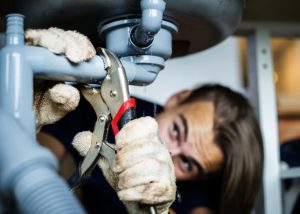Guide To Water Leakage Detection At Home
Guide To Water Leakage Detection At Home
Blog Article
Were you on the lookout for tips around Detecting hidden plumbing leaks?

Early discovery of dripping water lines can reduce a potential disaster. Some little water leakages may not be visible.
1. Take A Look At the Water Meter
Inspecting it is a surefire way that assists you uncover leakages. If it relocates, that indicates a fast-moving leakage. This implies you may have a slow leak that might also be below ground.
2. Examine Water Intake
Analyze your water bills and track your water consumption. As the one paying it, you should see if there are any kind of inconsistencies. If you spot sudden changes, despite your intake coinciding, it suggests that you have leakages in your plumbing system. Bear in mind, your water expense should drop under the same variety on a monthly basis. An unexpected spike in your bill shows a fast-moving leak.
On the other hand, a constant rise every month, even with the same routines, reveals you have a slow leakage that's additionally slowly intensifying. Call a plumber to thoroughly check your property, especially if you feel a warm area on your floor with piping beneath.
3. Do a Food Coloring Examination
30% comes from commodes when it comes to water intake. Test to see if they are running appropriately. Drop specks of food shade in the storage tank and wait 10 mins. There's a leak in between the storage tank and bowl if the shade somehow infiltrates your bowl during that time without flushing.
4. Asses Exterior Lines
Do not fail to remember to check your exterior water lines also. Test spigots by attaching a yard tube. Needs to water permeate out of the link, you have a loosened rubber gasket. Change this and make certain all connections are limited. If you have actually got a sprinkler system, it will certainly assist get it skillfully analyzed as well as kept each year. One small leakage can waste tons of water and increase your water bill.
5. Evaluate and also Evaluate the Scenario
House owners must make it a practice to examine under the sink counters and also even inside closets for any bad odor or mold development. These two warnings show a leak so timely focus is required. Doing regular evaluations, also bi-annually, can save you from a major problem.
If you know your residence is already old, maintain a careful eye on your heating units, tubes, pipelines etc. Check for stainings and damaging as the majority of devices as well as pipes have a life span. They will additionally normally weaken due to tear and put on. Don't wait for it to intensify if you think leaking water lines in your plumbing system. Call an expert plumber today so you don't wind up with a horrible mess in your home.
Early detection of dripping water lines can minimize a possible catastrophe. Some small water leakages may not be noticeable. Checking it is a surefire way that aids you find leakages. One tiny leakage can lose loads of water and also increase your water expense.
If you presume leaking water lines in your plumbing system, don't wait for it to intensify.
WARNING SIGNS OF WATER LEAKAGE BEHIND THE WALL
PERSISTENT MUSTY ODORS
As water slowly drips from a leaky pipe inside the wall, flooring and sheetrock stay damp and develop an odor similar to wet cardboard. It generates a musty smell that can help you find hidden leaks.
MOLD IN UNUSUAL AREAS
Mold usually grows in wet areas like kitchens, baths and laundry rooms. If you spot the stuff on walls or baseboards in other rooms of the house, it’s a good indicator of undetected water leaks.
STAINS THAT GROW
When mold thrives around a leaky pipe, it sometimes takes hold on the inside surface of the affected wall. A growing stain on otherwise clean sheetrock is often your sign of a hidden plumbing problem.
PEELING OR BUBBLING WALLPAPER / PAINT
This clue is easy to miss in rooms that don’t get much use. When you see wallpaper separating along seams or paint bubbling or flaking off the wall, blame sheetrock that stays wet because of an undetected leak.
BUCKLED CEILINGS AND STAINED FLOORS
If ceilings or floors in bathrooms, kitchens or laundry areas develop structural problems, don’t rule out constant damp inside the walls. Wet sheetrock can affect adjacent framing, flooring and ceilings.
https://www.servicemasterbyzaba.com/blog/how-to-detect-water-leakage-in-walls/

As a person who reads on Finding hidden leaks, I figured sharing that piece was really helpful. Those who appreciated our blog post plz make sure you remember to share it. I truly appreciate reading our article about Hacks to detect leaks.
Report this page